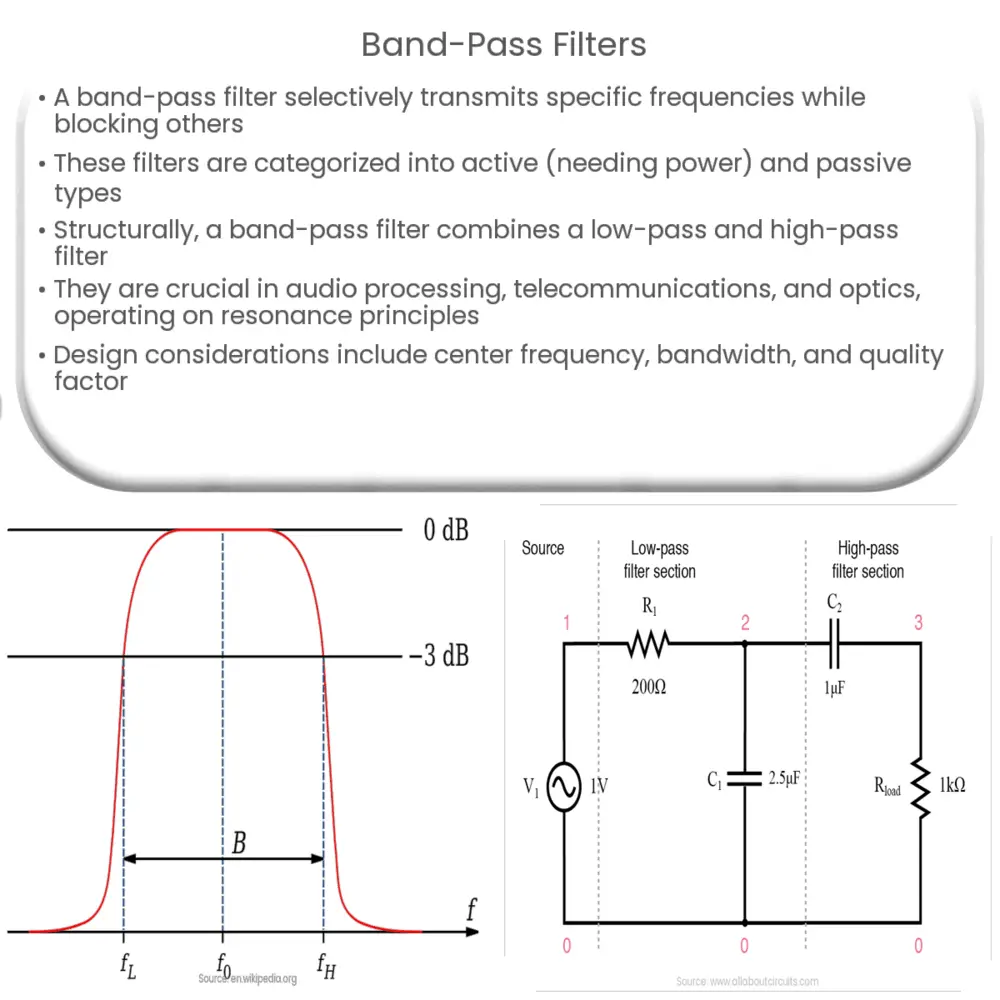Explore the fundamentals, types, applications, and design considerations of band-pass filters in electronics and signal processing.

Introduction to Band-Pass Filters
A band-pass filter is a critical device in the realm of electronics and signal processing. This device facilitates the selective transmission of specific frequencies, while reducing the strength of undesirable frequencies outside a predefined range.
The Fundamentals of Band-Pass Filters
The primary function of a band-pass filter is to confine the input signals to a specified frequency band, thus it ‘passes’ only a certain band of frequencies. The frequencies that fall within this band are transmitted almost unchanged, while those outside the band are greatly attenuated or completely blocked.
The Types of Band-Pass Filters
- Active Band-Pass Filters: These are filters that use active components such as transistors and operational amplifiers, in conjunction with resistors and capacitors. They require an external source of power.
- Passive Band-Pass Filters: These do not require an external power source and are made using only passive components like resistors, inductors, and capacitors.
The Basic Structure of a Band-Pass Filter
A band-pass filter fundamentally consists of a low-pass and a high-pass filter combined in series. The high-pass filter allows frequencies higher than a certain cut-off frequency to pass through, while the low-pass filter allows frequencies lower than a different cut-off frequency to pass through. Consequently, the output signal is a band of frequencies between these two cut-off points.
Applications of Band-Pass Filters
Band-pass filters play a significant role in various domains:
- Audio Processing: In audio equipment, these filters are used to isolate frequencies that are within the audible range (20 Hz – 20 kHz).
- Telecommunications: They’re critical in wireless communication systems to filter out noise and unwanted signals, enhancing the quality of the communication.
- Optics: Optical band-pass filters selectively transmit light of a small range of colors while reflecting other colors.
The intriguing concept of band-pass filters encompasses a blend of theory, practicality, and a wide range of applications. However, the fundamental understanding revolves around the mechanism of frequency selection and filtering, which we will further delve into in the next section.
Understanding the Mechanism of Band-Pass Filters
Band-pass filters operate based on the principle of resonance. This principle states that a certain system will oscillate with greater amplitude at specific frequencies. In a band-pass filter, these frequencies are determined by the values of the components used in the filter, including resistors, inductors, and capacitors. When an input signal with a frequency matching the resonant frequency of the filter is applied, it is allowed to pass through, while frequencies that are significantly lower or higher are blocked.
Design Considerations for Band-Pass Filters
Designing a band-pass filter requires a clear understanding of its key parameters: center frequency, bandwidth, and quality factor (Q).
- Center Frequency: This is the midpoint of the pass-band. The center frequency should be carefully chosen to align with the specific frequencies that the filter is designed to pass.
- Bandwidth: Bandwidth is the range of frequencies that the filter will allow to pass. The difference between the upper and lower cut-off frequencies defines the bandwidth.
- Quality Factor (Q): The quality factor is a measure of how “selective” or “resonant” the filter is. A higher Q factor signifies a narrower pass-band.
The Impact of Band-Pass Filters
From audio systems and wireless communications to medical equipment and scientific research, band-pass filters contribute significantly to enhancing signal quality and minimizing noise. These filters are a testament to how intricately designed electronic components can profoundly impact various technologies.
Conclusion
In conclusion, band-pass filters, with their unique ability to isolate a band of frequencies, play a critical role in electronics and signal processing. Their utilization spans multiple domains, highlighting their importance and versatility. Understanding the mechanisms and principles behind these filters provides a foundation for appreciating the complexity and functionality of modern electronic devices. As technology continues to advance, the design and application of band-pass filters will undoubtedly evolve, creating new possibilities and improvements in signal transmission.

